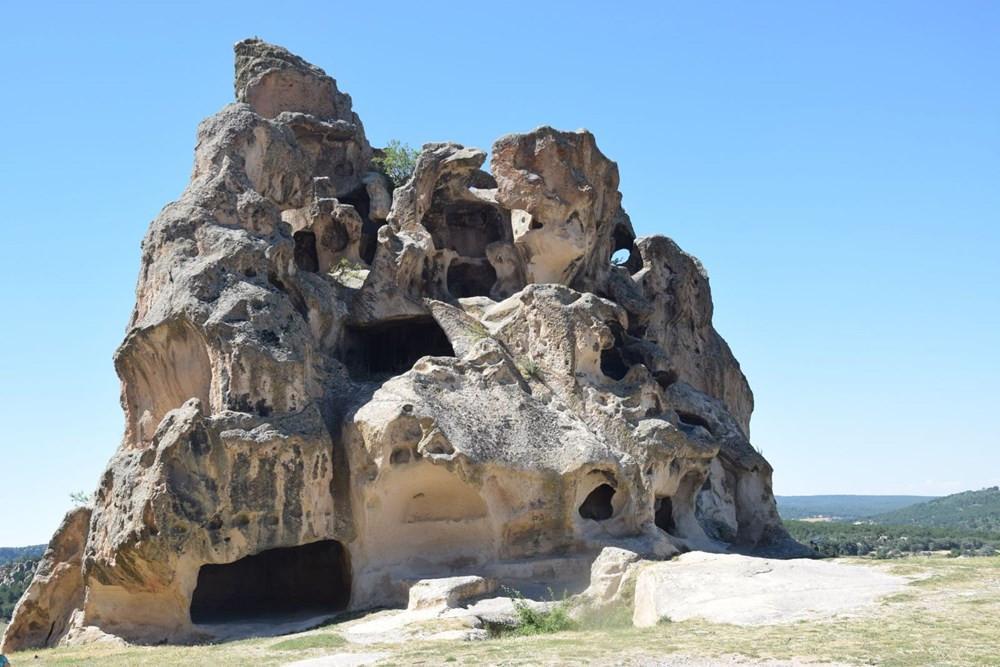
The Phrygian Valley arguably carries one of Turkey’s most unparalleled ancient ruins and relics, with its unique formations that once housed ancient settlements. But the settlement has been abandoned by those who vied for the ancient site to become a tourist hotspot, with the site having remained uncared for over the years.
Once the home of Phrygians, who lived in Anatolia in the 1200s B.C. and the country of King Midas, Phrygia was expected to be opened to tourism by the people of the region for years. It has failed to do so.
No new excavations were not carried out in the region in recent years, causing the Union of Protection and Development of the Phrygian Cultural Heritage (Frigküm), which was formed with the combination of Eskişehir, Afyonkarahisar and Kütahya provinces for the development of the region, to lose influence and effectiveness.
Bad roads resembling an empty field leading to the Phrygian Valley in Eskişehir and the insufficiency of direction signs, which are already broken, are the major downsides of the region, repelling visitors from coming to the region. On top of that, writings, scratches, bullet marks and illegal excavations of smugglers have all caused this rich history to be vanished.
The writings and signs on the Yazılıkaya monument, known as an open-air temple, are still unresolved. Yazılıkaya is known as the most important historical work of the Phrygian valley. It is known that some of the Phrygians lived on Yazılıkaya Plateau and that there is a great mystery in the plateau, where no excavation work has been carried out.
The people of the region want excavation work to be carried out in this region. They also express their reactions by claiming that the recent restoration works in Yazılıkaya are not faithful to the original.
Stating that the filling made for cracks damaged the rock, villagers said, “We demand protection and restoration for Phrygian structures. This region should be made a tourism site. We want Yazılıkaya to be protected by being covered like Göbeklitepe. External factors and nature are damaging the big rock.”
Phrygian Valley second Cappadocia
The Phrygian Valley, which includes Eskişehir, Afyonkarahisar and Kütahya, is known as the second Cappadocia and home to important artifacts. The Midas Monument (Yazılıkaya), the inscriptions and shapes on which cannot be solved, is located in Yazılıkaya village of Han district, 80 kilometers away from Eskişehir. Due to the monument, the region is called Midas City. The 17-meter monument was built in 600 B.C.
The monument, which is considered to be in the center of ancient Phrygia, is the most magnificent of the monuments in the region, which is called the Phrygian Valley and spread over a wide geography. An area, which is at the top of Yazılıkaya and estimated to be an underground city, is still waiting to be unearthed.
Phrygian Valley
The Phrygian Valley, with its rock formations from the Phrygians, rock monuments, rock tombs, churches and chapels, fairy chimneys and other natural beauties, is one of the most charming 10 valleys in Turkey.
The Phrygian Valley has been home to a number of communities since ancient times. The area was dominated by the Phrygians between 900 B.C. and 600 B.C. but was dealt a fatal blow in 676 B.C. by the Cimmerians, who came from further east beyond Anatolia. Later, the area fell under Roman control.
The Phrygians experienced a golden age during the reign of King Midas, who ruled from Gordion—close to present-day Ankara—and is thought to have lived between 738 B.C. and 696 B.C.